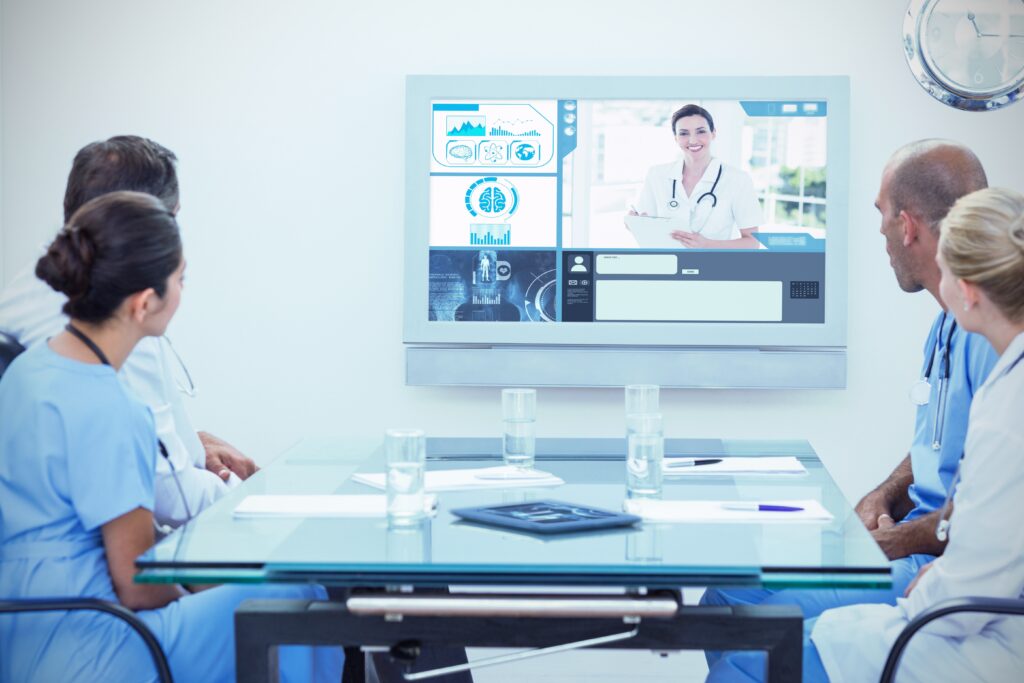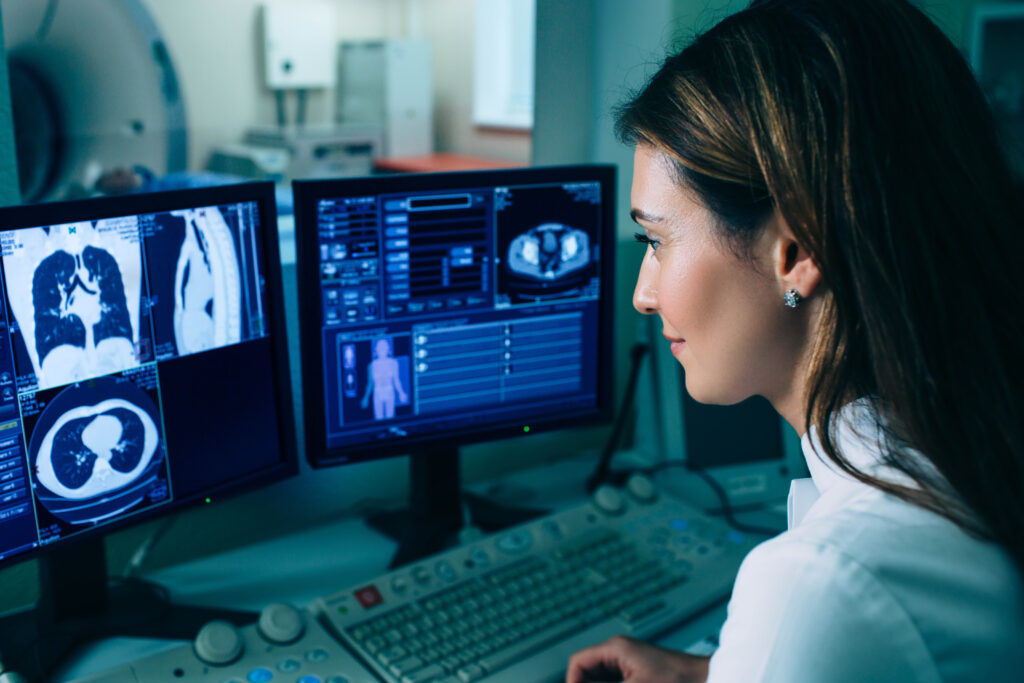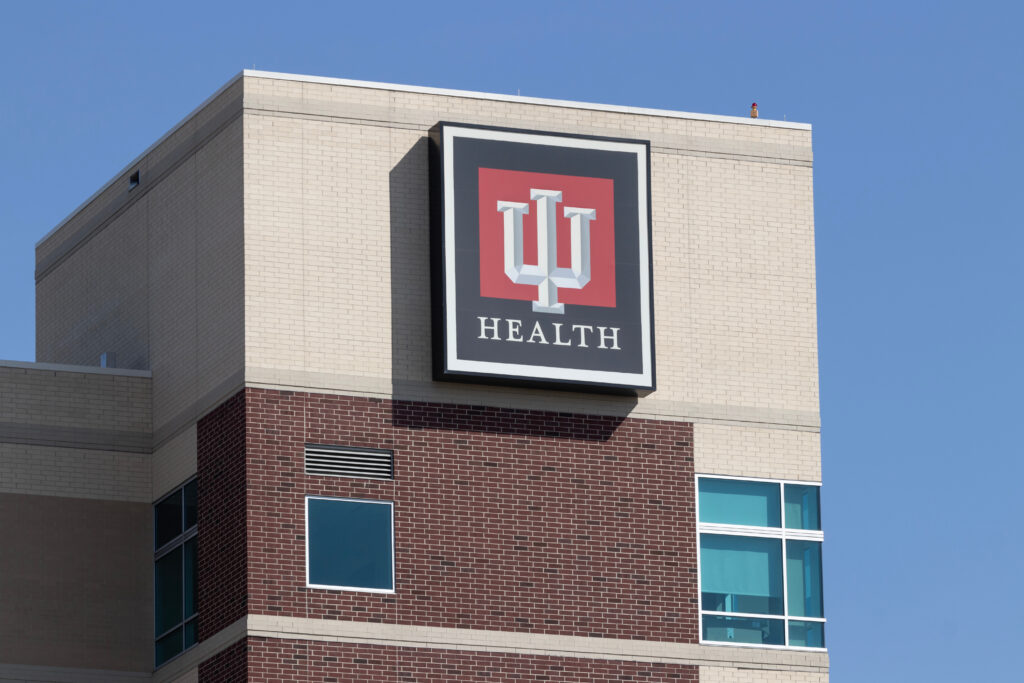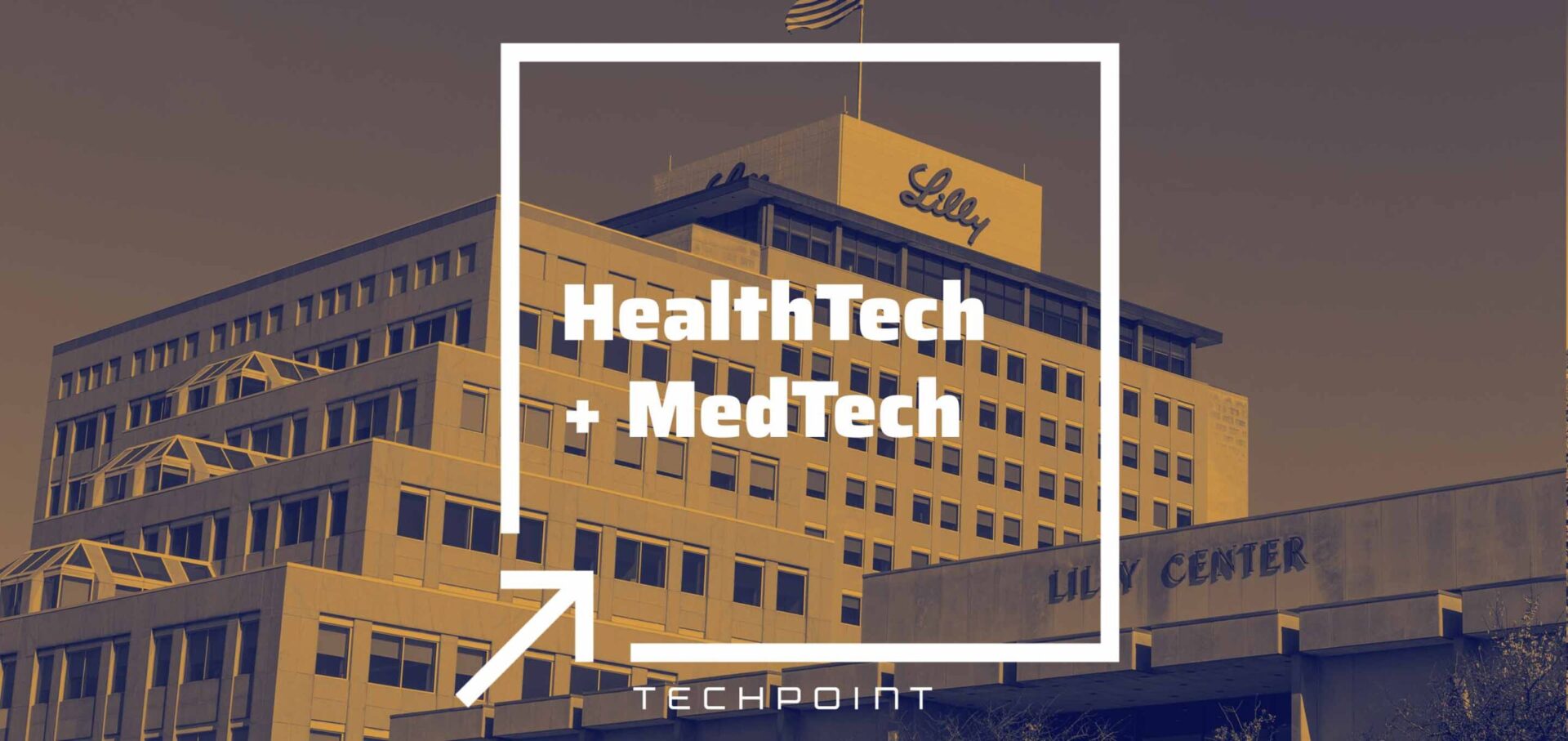Indiana Leads in the HealthTech and MedTech Evolution
Every industry has been transformed in one way or another by technology, and the healthcare industry is no exception. The COVID-19 pandemic accelerated developments in the healthcare space to address challenges with ineffective patient care and inefficiencies in administrative processes—especially as digital health experiences have increased over the past five years. In addition, medical technology is just as important as pharmaceutical development for patient care, providing revolutionary options for treatment and diagnostics.
Whether it’s software that helps improve and streamline administrative processes or medical technology that supports better patient treatment, innovations in the health and medical technology space are creating more quality of life for patients. As costs continue to rise, along with growing frustrations surrounding disconnected patient care, the development of innovative, functional technology to support the healthcare experience and patient care is more critical than ever.

What’s the difference between health tech and med tech?
The healthcare technology industry is large and growing, as are subsectors in the space. While sometimes used interchangeably, there are distinct differences between health tech and med tech, but the space is still being defined as the sector grows and more subsectors emerge.
“The boundaries between health tech and med tech can be blurry,” says Dr. Don Brown, founder and chief executive officer of LifeOmic, a technology company that is serving as the technical backbone for med tech companies. “From my perspective, health tech broadly encompasses a wide range of solutions used by clinicians. Healthcare technology is designed to support both healthcare professionals and consumers to improve health and wellness. Med tech, on the other hand, leans toward specific medical devices or technology that is designed to diagnose, monitor or treat specific health conditions.”
For the most part, industry experts agree that health tech is broader and focused on direct interactions with patients, while med tech is more focused on technology solutions to drive better patient care.
“Health tech and med tech are two distinct but interconnected fields within the broader healthcare landscape,” says Julia Regan, founder and chief executive officer of RxLightning, a SaaS platform that enables better management of specialty medication enrollment.
“While health tech and med tech both involve the application of technology in healthcare, health tech has a broader focus on overall health management, wellness and patient engagement, whereas med tech specifically deals with medical devices used for diagnosis, treatment and monitoring of medical conditions. Both fields play crucial roles in driving innovation and improving health outcomes.”
Experts believe that health tech and med tech can and will intersect more frequently in the future.
“In a growing world of daily monitoring, routine data collection, broad-based applications and mobile devices that interact with other equipment, devices, machines and software—including robotics, artificial intelligence (AI) and other gadgets—the two areas exist symbiotically,” says Bob Vitoux, president and chief executive officer of OrthoWorx, a non-profit that bridges the health tech and med tech gap through supporting the medical device industry ecosystem.

How the healthcare technology industry is changing.
Acceleration of the health tech industry has created new opportunities for improvement, with patient-centered care top of mind. Experts across Indiana see a variety of changes happening in the industry now and in the future.
“The industry, like all of healthcare, is becoming more and more patient and/or consumer-centered, and those consumers’ expectations are changing rapidly,” says Jane Dunigan-Smith, chief strategy officer for BioCrossroads, an organization dedicated to advancing Indiana’s life sciences industry. “Consumers’ roles in health-related decision-making have been increasing for years. They are not comparing their experiences with health tech or med tech to other healthcare-related experiences; they are comparing their experiences as consumers of technology in general—whether it’s their mobile phone, their streaming service, etc. The bar has been raised. They expect tech that fits seamlessly into their daily lives and demonstrates value and benefits to them.”
Regan agrees. “The future of health tech is patient empowerment and personalized care. Patient engagement tools, health apps and portals will enable individuals to actively participate in their healthcare journey, access health information and communicate with healthcare providers. The future of health tech will involve further customization and personalization of healthcare services, tailoring treatments based on individual profiles, lifestyle factors and preferences.”
Regan’s bona fides as a predictor of change in the sectors are clear. RxLightning won the Disruptor of the Year and Product Launch of the Year at the 2023 Mira Awards. In 2022, RxLightning took home Mira Awards for Startup of the Year and Tech Product of the Year for its groundbreaking work in digitizing a paper-dominated process for patients to receive more than 1200 specialty medications, reducing wait times from weeks or months to days or even hours.
Adoption of digital health technology, including wearable devices that enable early detection and reporting of health issues, is increasing as telemedicine, remote patient monitoring and digital experiences have become integral parts of healthcare delivery, enabling convenient and accessible healthcare services, she said.
“This digital transformation is likely to continue, with an increased focus on interoperability, data exchange and seamless integration of tech solutions into existing healthcare systems,” Regan predicted.
Indiana’s healthcare providers are doing it, actively deploying technologies to drive better patient experiences and healthcare delivery outcomes. For instance, Parkview Health, the largest healthcare provider and employer in northeast Indiana, continues to explore some of the most advanced technologies to connect their patients with tools that can improve health.
“Like so many other industries, healthcare has been able to harness the power of technology to create more seamless interactions, focusing on improving the overall experience and leveraging patient feedback for future enhancements,” said Max Maile, senior vice president of digital health, Parkview Health. “For example, we’ve partnered with local schools and employers to open virtual care clinics, allowing students and employees to access care onsite. These clinics have exam kits that enhance the virtual care experience by sharing real-time data such as heart rate, body temperature, heart and lung sounds, and other information directly with the provider.”
Paul C. Dreier is chief executive officer of Novilytic, a med tech company that develops nanotechnology products to help reduce the cost of medicines and improve their quality. He sees the miniaturization of technologies that allow for faster point of care (POC) testing and better quality testing as the biggest change happening in med tech.
“POC is allowing doctors and other medical professionals to diagnose and treat patients in one visit versus sending tests out. The use of those new technologies, such as Novilytic’s Proteometer™, expedites pharmaceutical development, which we believe will increase accessibility, quality, and the overall number of medicines that read the market each year,” he said.
Brad Bostic, chairman and chief executive officer of hc1 Insights, believes the biggest change in the coming years will be the utilization and integration of AI and machine learning.
“When you’re sick, you could end up having lab tests run that generate information that can be leveraged to be more precise and create an optimal approach to how you’re diagnosed in a more timely, preventative and proactive way,” he said. “To do that requires a level of machine learning to marry up all these different lab data sets that get generated by different labs that happen within different clinical settings with different providers. The models are only as good as they are trained to be, so incorporating a reinforcement learning from a human feedback approach to AI will empower lab technicians to focus on the actual analysis while solutions powered by AI curate and locate information to shorten the distance between symptoms to diagnosis.”
Vitoux agrees that efficiency will continue to be top of mind, which will be possible with new technology developments. “The continuum of care will continue to push toward higher levels of efficiencies through data utilization, AI learning and variations in healthcare delivery, all while providing higher levels of individual care and monitoring. Innovations in diagnostics, surgical and drug delivery and recovery will support greater accuracy in detection, prevention and earlier intervention treatments, leading to improved patient outcomes and patient monitoring,” he says.
Brown said several changes are taking place across the health tech and med tech industries and regulatory, data security and privacy standards are continuously evolving to keep pace with the rapid changes in technology. Advances are also underway in wearables, sensors and robotics, he said.
“One of the trends that excites me most is the rise of precision medicine. LifeOmic is actively working with omic laboratories, medical device companies and health systems to improve the quality and efficiency of clinical decision-making,” he said. . “These systems include human-in-the-loop interactions for fine-tuning image segmentation and classification, natural language processing and large language models. The potential to personalize care with the rise of genomics is exciting.”
It’s clear that the future of health tech is focused on providing better care—both on the service delivery side and the technology side.

Where Indiana fits into the health tech landscape.
Indiana is in a unique position to grow the health tech sector and make a global impact with strategic support. The state is home to a variety of globally significant healthcare organizations like Eli Lilly and Company and Roche Diagnostics, its Warsaw region is known as the “Orthopedics Capital of the World and $6.8 billion in capital investment was poured into the state’s life sciences sector in 2022.
“Indiana is the world leader in medicinal chemistry analytics, implantable medical devices and certain pharmaceuticals. More importantly, as reported in the Indianapolis Business Journal and other publications, Indiana is the largest exporter of life sciences technology in our nation. We should all be proud of these health and med tech achievements,” says Dreier.
“The history of life science, therapeutics, medical devices and orthopedics is impressively represented across Indiana. This history includes companies whose global reach have impacted millions of lives, generated tens of thousands of jobs and served as an economic driver and continues to do so. This is a compelling case for the ongoing need for continued financial investment, additional incentives to support growth and attract new companies and further collaboration across the entire value chain that supports this landscape,” says Vitoux.
Regan agrees. “Indiana has played a significant role in the health and med tech landscape. The state has emerged as a hub for innovation and collaboration, contributing to the broader healthcare industry. Indiana has a vibrant startup ecosystem, fostering the growth of health tech and med tech startups. The state provides support through various initiatives and groups, such as TechPoint, the Indiana IoT Lab and the 16 Tech Innovation District. These resources encourage entrepreneurship, innovation and collaboration among healthcare and technology professionals, helping startups bring their solutions to market.”
Regan adds that Indiana has also been proactive in implementing health information exchange initiatives, aiming to improve interoperability and sharing of health data across the state’s healthcare systems. “Organizations like the Indiana Health Information Exchange (IHIE) facilitate the secure exchange of electronic health record data among healthcare providers, enabling better care coordination and data-driven decision-making. The state government has also implemented initiatives to support the adoption of telehealth, promote data privacy and security and to foster innovation in healthcare.”
Regan also notes that Indiana has world-class healthcare institutions and research centers, including the Indiana University School of Medicine, Purdue University and Indiana University Health. Parkview Health also offers the Parkview Mirro Center for Research and Innovation, operating a simulation lab, innovation program, and clinical and informatics research. The Mirro Center is unique in the healthcare industry, as most healthcare research and innovation programs are affiliated with an academic institution.
“These institutions drive research and development in areas such as medical devices, pharmaceuticals, genomics and data analytics. Their collaborations with industry partners and focus on research contribute to the advancement of health tech and med tech across the country.”
As one of the top economic drivers in the state, Indiana also features a robust medical device manufacturing industry and is home to global leaders like Cook Medical and Roche Diagnostics. These companies design, develop and manufacture a wide range of medical devices, from surgical instruments to imaging equipment. “Indiana’s expertise in medical device manufacturing contributes to the overall med tech landscape and supports the growth of the industry. Indiana’s medical device industry, focus on health information exchange and supportive startup ecosystem collectively contribute to its role in the health and med tech landscape. The state continues to drive innovation, collaboration and advancements in technology to improve healthcare delivery and patient outcomes nationwide,” says Regan.
“I can’t speak for all of Indiana, but BioCrossroads’ role in the Indiana health tech landscape is to continue to support over 2,700 life sciences companies that currently operate in Indiana and to help bring in more,” says Dunighan-Smith. “This vibrant and life-changing sector supports more than 63,000 positions and contributes $77 billion a year to the state’s economy. We will continue to amplify this sector to increase our worldwide reputation as innovators on globally-significant medical breakthroughs in both health tech and med tech.”

The future of health tech in Indiana is promising.
Bostic believes Indiana is primed for growth in this industry in the future. “We are in a unique position in Indiana to grow our health tech landscape. We are home to some of the leading health systems, universities, research institutions, pharmaceutical and medical device companies in the world. If we innovate together and embrace the exchange of ideas about how technology can be leveraged to solve problems in the healthcare sector, there is no reason we can’t become a destination for health tech startups.”
Vitoux adds that we are the orthopedics capital of the world. “The Northeastern Indiana region represents an unmatched concentration of companies that span the value chain in medical devices and orthopedics. This includes research, design, development, manufacturing, assembly, distribution, sales, marketing and service. OrthoWorx, through its focus on talent attraction, development and innovation is proud to support these companies serving the $55 billion global life-improving orthopedic industry.”
In addition to the companies dedicated to healthcare and medical technology advancements in Indiana, universities across the state are also providing or developing specialized programs that will feed the talent pipeline for the next generation of scientists, clinicians, researchers and technologists.
“Indiana is home to three of the top five analytical chemistry universities in the world: Purdue University, Indiana University and Notre Dame,” says Dreier. “When you combine the health tech and med tech advancements made by these universities, every person you know has someone whose life was improved or saved by these technologies. Meanwhile, the Indiana Economic Development Corporation supports start-up companies bringing these new technologies to the market. It’s clear that Hoosiers are helping to improve global health!”
“The future of health tech and med tech is promising, with continued advancements in technology, increased collaboration between healthcare and technology sectors, and a focus on patient-centric care,” says Regan. “These innovations hold the potential to drive efficiency, improve access to care and ultimately transform the healthcare landscape for the better.”



